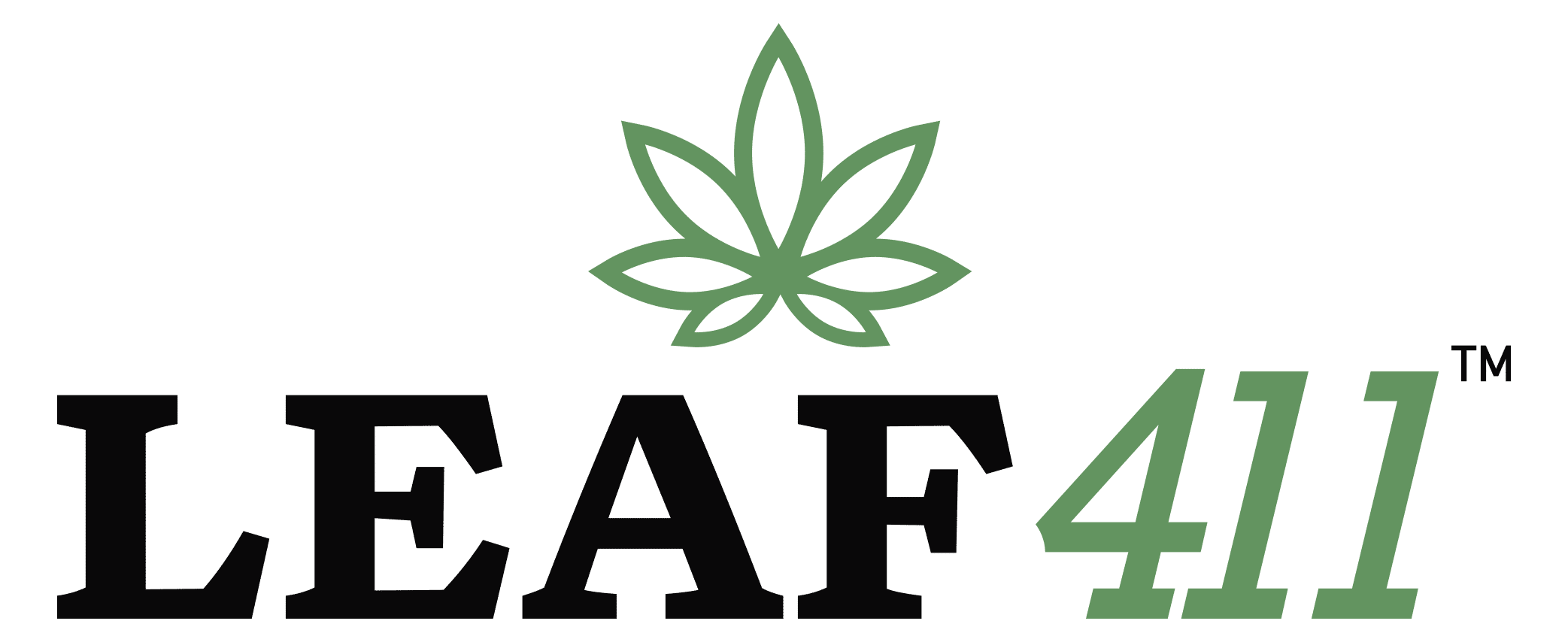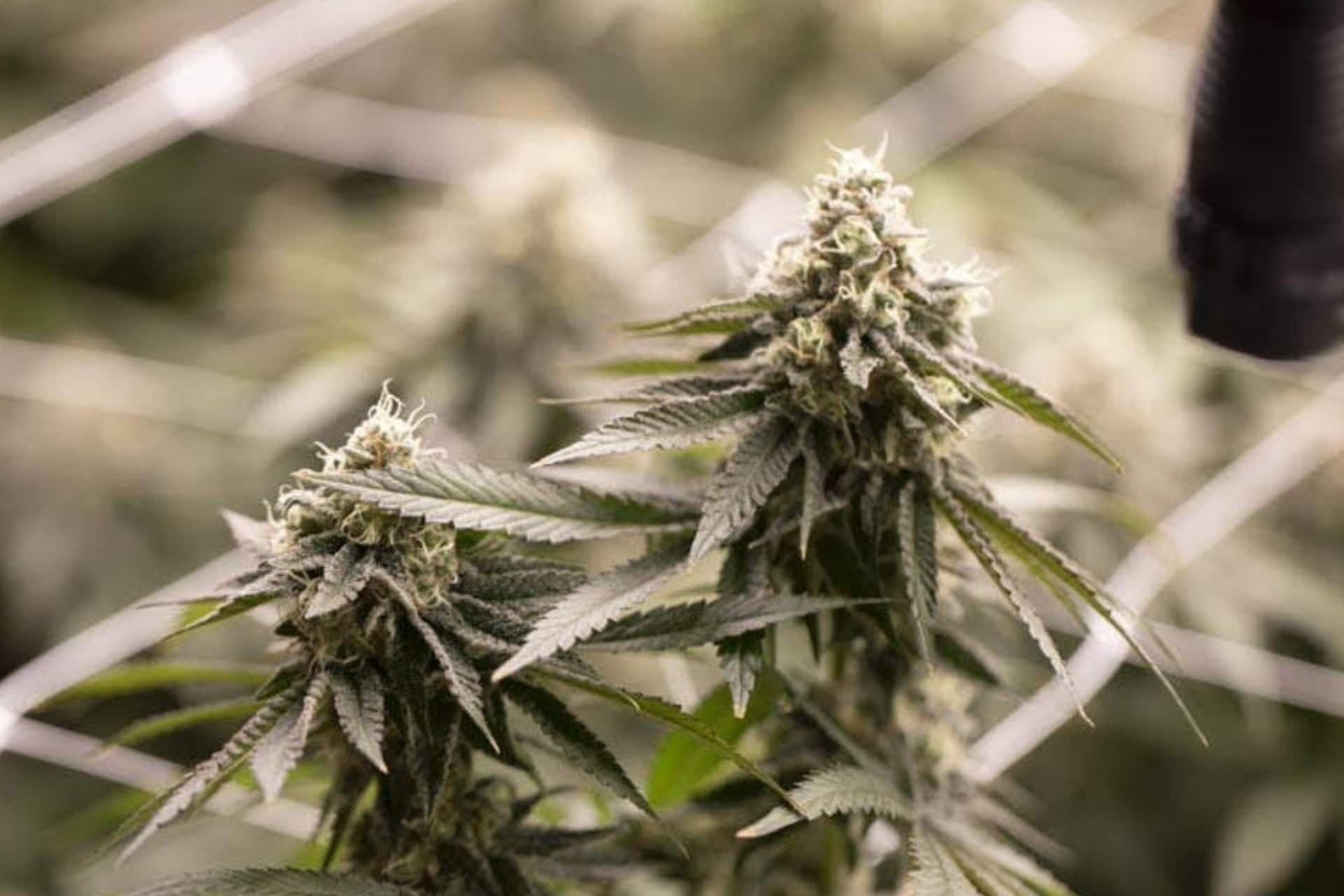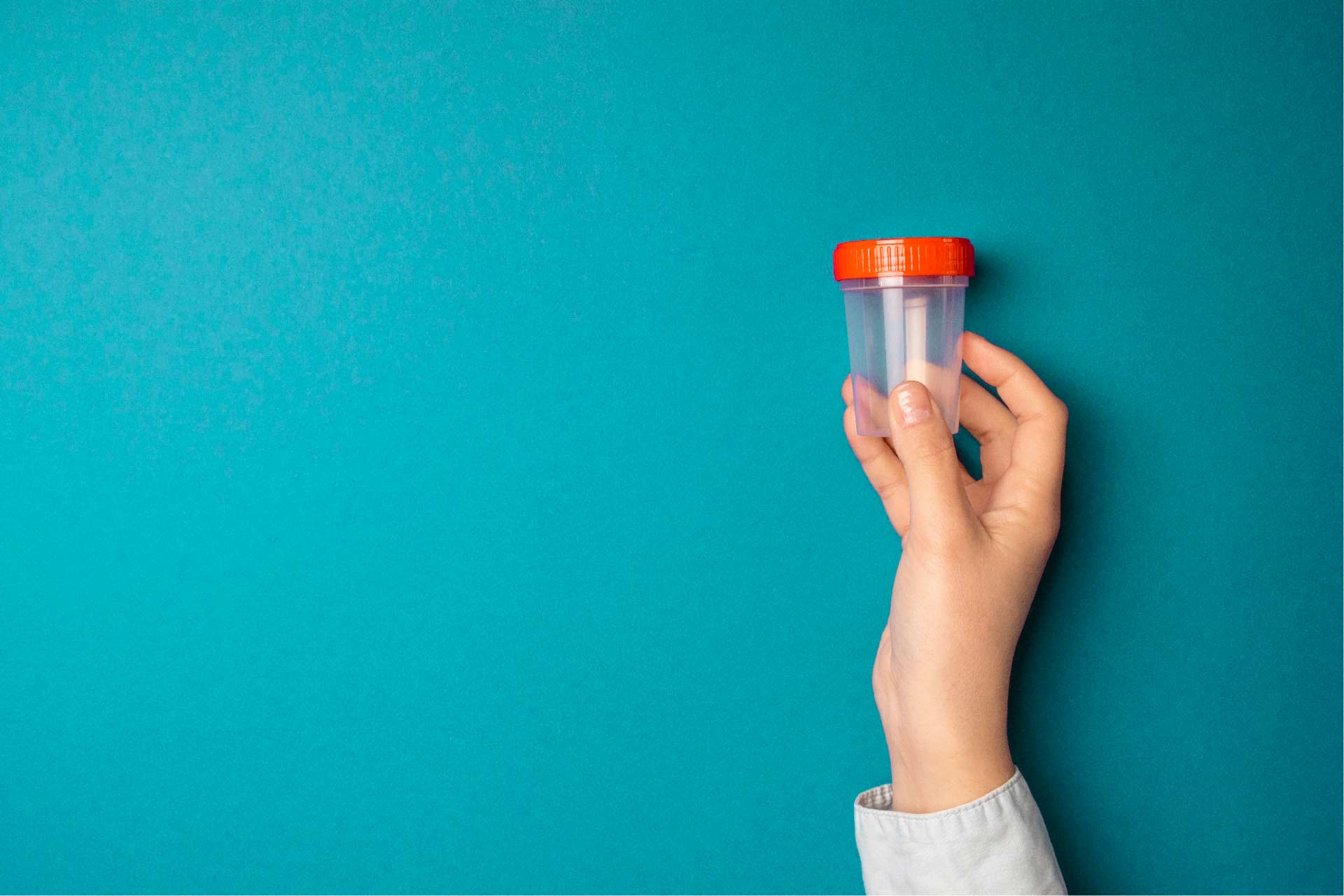Dr. Ethan Russo: Cannabis Can Be Better Yet
Note: Our Leaf411 Blog periodically shares articles from The Cannigma, a trusted resource for research-backed medical cannabis education and information. We have incredible respect for Dr. Ethan Russo’s work, and hope you find the following Cannigma article to be useful! Also, you can hear from Dr. Russo and many other cannabis health professionals at the Whole Plant Expo. For more information and discounted Leaf411 tickets, visit https://wpe20.co/leaf411
This article was originally published on The Cannigma and appears here with permission.
The cannabis that most people have access to isn’t what it could be. A big part of that is a result of the way the plant has been bred to have high THC levels for the recreational market over the years.
“For the most part, around the world, we’re still dealing with cannabis that is mostly high THC and high myrcene, which is gonna be very sedating, producing what we call colloquially couch lock, where the person feels immobilized,” Dr. Ethan Russo explains on The Cannabis Enigma podcast. “So that might be fine for the person that’s trying to get to sleep, but it’s not at all good for the person that might need to work, or study, and function well in the process, and particularly for chronic pain conditions.”
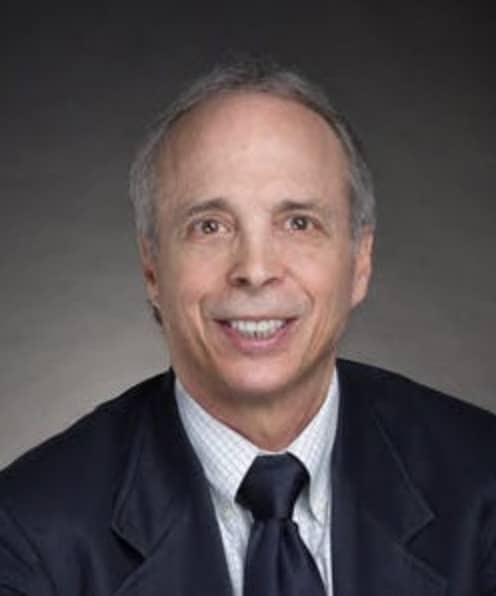
Dr. Ethan Russo
Science has made great advances in identifying what chemical properties of a given cannabis chemovar would be beneficial for various diseases and treatments, “but that’s a far cry from saying that [patients] would be able to access a chemical variety of cannabis that would be appropriate for their treatment,” Russo explains.
“We really haven’t seen the capabilities of cannabis properly harnessed at this point,” he adds.
Dr. Russo, one of the premier cannabis researchers who is responsible for the theory of clinical endocannabinoid deficiency and has done a great deal of work on proving and harnessing the entourage effect, also discussed different approaches to dosing, and why developing a tolerance can actually be a good thing.
“We really haven’t seen the capabilities of cannabis properly harnessed at this point.” (The Cannigma / Anthony Travagliante)
“The beauty of cannabis is, even though one gets accustomed to the psychoactive effects, the benefits on whatever you’re treating remain. In other words, if we have a chronic pain patient and they get benefit from using cannabis, as long as that condition is stable — it’s not getting worse — we don’t see dose escalation over time, and in fact, there are many people, who have taken cannabis therapeutically for decades that are using the same dose.”
Dr. Russo will be speaking at the Whole Plant Expo.
In the second part of the episode, Dustin McDonald of Americans for Safe Access interviews Sue Lewtin, a medical cannabis patient treating lyme disease, about her journey with the plant. Like so many others, Lewtin explains how her doctors got her started on the path of medical cannabis but that bulk of the work and learning had to be done on her own.
Edited and mixed by Michael Schaeffer Omer-Man. Produced by Michael Schaeffer Omer-Man and Matan Weil. Music by Desca. The Cannabis Enigma podcast is a co-production of The Cannigma and Americans for Safe Access.
Full transcript:
Michael Schaeffer Omer-Man: Dr. Ethan Russo, thank you so much for joining us.
Dr. Ethan Russo: Thank you.
Omer-Man: I want to dive right into it and start with a question about the theory of endocannabinoid deficiency, which you published first about a few years ago. Can you explain the theory and what led you to it and where our understanding of it stands today, four or five years later?
Dr. Russo: Well, it’s actually a lot longer, I first formulated the theory in a publication that was part of a book in 2001. But as a neurologist, I was clearly aware that many diseases that we saw in practice were related to neurotransmitter deficiencies. And although this is overly simplistic, one of the things that happens in dementia, particularly Alzheimer disease, is a deficiency of acetylcholine, the memory molecule neurotransmitter in the brain. Similarly, in Parkinson disease, we have a deficiency of dopamine function. And depression to some extent is related to possible deficiencies of serotonin, although it’s actually much more complicated. So having an awareness of the endocannabinoid system, I wondered why would there not be disorders in humans that related to what I call the clinical endocannabinoid deficiency. In thinking about it, how would that be manifest? Well, we know that the endocannabinoid system among its various functions, regulates and modulates mood, it regulates and modulates pain and many other functions. So I wondered about disorders that might be common in humans where there was a constellation of symptoms that would indicate the possibility of endocannabinoid deficiency, and the three that really came to mind were migraine, irritable bowel syndrome, and fibromyalgia.
Now, these disorders actually have a lot in common in that they’re all what are called diagnoses of exclusion, which is a way of saying that there’re no specific tests for them, you can’t scan for them, you can’t do blood tests for them, but they all involve a sort of hyper-sensitivity to pain. In the case of migraine it’s headaches, but also painful stimuli such as noise and bright light. For irritable bowel it’s an acute awareness of the gut and phenomena that normally don’t hurt are quite painful to people with that condition, and with fibromyalgia, you’ve got a generalized often increase in pain sensitivity on certain muscles or fibrous tissues may hurt to a great extent, but examining the tissue reveals no specific problem to explain it. Additionally in fibromyalgia, people are beset by anxiety and depression, and especially sleep disturbance. The other thing that these three conditions have in common is that conventional medicines often work quite poorly in treating them, whereas many of the people who have them gain a lot of benefit from treatment with cannabis. Given that the cannabis usually contains THC, it indicates that perhaps the THC is replacing endocannabinoids that are deficient in these disorders. So that’s the basic outline of the idea behind the theory, which has been corroborated subsequently, and we can talk about that.
Omer-Man: Yeah, I wanted to ask about what work has been done on that since I interviewed Dr. Adi Aran about a year ago, and he mentioned that in his studies on cannabis and CBD with autistic children, that he was looking at the possibility of whether an endocannabinoid deficiency or a mis-function was playing a role there.
Dr. Russo: Sure.
Omer-Man: Are there other areas where that kind of work is taking place?
Dr. Russo: Right. So I published an article on the subject in 2004 in more detail than the first publication in 2001. One of the things I propose there would be doing a study in which people had a lumbar puncture, spinal tap, to look at the cerebral spinal fluid that surrounds the spinal cord and the brain, and to measure endocannabinoid levels directly. But I’ve realized that doing such a study at least in my country, wouldn’t get through an Institutional Review Board or Ethics Committee. But subsequently in 2008 in Italy, Sarchielli et al, were able to do that exact study. And they showed a remarkable difference with low anandamide levels in people with migraine, as compared to control patients that didn’t have a diagnosis of migraine. So this was the first objective proof of the existence of a clinical endocannabinoid deficiency. But subsequently, there’ve been a lot of corroboratory studies including autism, as you mentioned, being related to this phenomenon. Also a very interesting study done by Matthew Hill et al, looking at people who were exposed to the 911 tragedy after September 11th, 2001.
And there were two groups, there were people that were involved in those events, who had manifestations of post-traumatic stress, and then people who were there, but didn’t end up with diagnosis of post-traumatic stress, and when they compared endocannabinoid function between the two, there were again remarkable statistically significant differences. And then, there’ve been genetic studies that show, in some instances, a difference in the cannabinoid receptors in people that might have one of these disorders, but there certainly is a lot of corroboration at this point, some years later, for this concept, and it’s been cited a couple of hundred times in the literature, sometimes mentioned as a theory, but sometimes with supporting data.
Omer-Man: You mentioned the receptors. I was gonna ask if is it mostly surrounding the levels of endocannabinoids, or also the availability of the receptors?
Dr. Russo: Well, it could be either. And to explain that, I would discuss what we call endocannabinoid tone, and that would be a function of three different things: The numbers of receptors and their activity level, we can have receptors that are active or inactive, the levels of the endocannabinoids themselves, particularly anandamide and 2-arachidonylglycerol, and third would be the activity of the enzymes that produce them and break them down. So endocannabinoid tone would be affected by changes in any of those three areas. The unfortunate thing is it’s not simple to test these things. As I mentioned, a lumbar puncture is an invasive procedure, and we can’t routinely do these just to figure out someone’s endocannabinoid levels. A blood test could be done, but there’re problems with that. Anandamide breaks down extremely rapidly in the body, and so if you’re taking a blood sample, it’s gotta be put on liquid nitrogen immediately and transported to a lab that can properly do the studies. The second problem is the levels of the endocannabinoids in the serum may or may not reflect the activity in the brain, so there’re times when they run in parallel, but other times when there are divergences between one and the other. So I mean the lovely thing in the future would be some kind of non-invasive scan of the brain that could answer these questions for us.
Omer-Man: And if we were to get there, assuming we will get there, and with the understanding that everybody’s endocannabinoid system functions slightly differently with these types of variations, and with another assumption that we understand how different diseases or conditions are correlated with those, how far are we from being able to point to specific cannabis chemovars, or that could be particularly beneficial for those conditions?
Dr. Russo: Well, the problem right now is with availability. What we’ve got is a situation where, for the most part, around the world, we’re still dealing with cannabis that is mostly high THC and high myrcene, which is gonna be very sedating, producing what we call colloquially couch lock, where the person feels immobilized. So that might be fine for the person that’s trying to get to sleep, but it’s not at all good for the person that might need to work, or study, and function well in the process, and particularly for chronic pain conditions. We would really benefit from having better profiles that would have less myrcene, more balance between THC and CBD, which is going to decrease the side effect profile and also have a beneficial profile of terpenoids that, again, may reduce associated adverse events and possibly help with other parameters, whether they be inflammation or a mood. So, in a given instance, I feel I have a good idea of what a person might benefit from, but that’s a far cry from saying that they would be able to access a team of our chemical variety of cannabis that would be appropriate for their treatment.
Omer-Man: You mentioned the different effects of different chemovars of different strains, and I wanna jump to the plant side of things for a minute. In much of the cannabis world, recreational, medical alike, they use these terms indica and sativa to sort of describe uplifting and more sedative of cannabis. And we know that those terms are generally not used correctly, and yet they’re everywhere, if they’re even real terms. How did that happen, and what should we be using… What terms should we be using to describe these different effects and types?
Dr. Russo: Sure. We’ll need a little history there to explain this. So, cannabis sativa, cultivated cannabis is a name that’s been in use for hundreds of years. Usually Linnaeus gets credit for it, but it was used for 200 or 300 years before him. So he was… His accession, what he was describing in his first books about this, was European hemp. So this is a tall plant, with narrow leaflets. A generation later, Lamarck in France, described what he thought was a different species, called cannabis indica. So this was a sample from India, was a bushier plant, but also with narrow leaflets. And that doesn’t resemble at all today what most people think of as indica, which is more likely gonna be a plant of Afghan genetics, which is only about a meter in height and has very broad leaflets, with a very pronounced sawtooth appearance to the leaflet edge.
So at one time, there could be chemical differences between these different types of cannabis, but they all interbreed and most people feel that cannabis is one very plastic species. What we should be dealing with is the chemical composition of the material and that can only come with an analysis that can’t be deciphered based on what the plant looks like, how tall it is, whether the leaflets are narrow, or broad or any of those criteria. We have to know what’s in it, what are the predominant cannabinoids and terpenoids, and then we’d have a good idea of what to expect in terms of results or effects when people use that chemovar. So I do prefer the term chemical variety or chemovar. Technically, there is no such thing as strains in cannabis. There are strains of bacteria and strains of viruses, but we use different terminology for plants and particularly for cannabis.
Omer-Man: And of the tools available to people today, in a practical sense, somebody walks into a dispensary and in some states you have access to certificates of analysis that give you the terpenes and different cannabinoid levels, but otherwise, you’re stuck with this paradigm that, as you said, it doesn’t really mean anything.
Dr. Russo: Correct. So yeah, in the olden days, what was needed was a personal bioassay. If somebody tried the material, if they liked it, they bought it. But this is 2020. My personal bias is that at point of sale, every consumer has the right and should have available a certificate of analysis that not only includes the cannabinoid and terpenoid profiles, but also safety parameters, so that they can know that the material wasn’t laden with pesticides, didn’t have heavy metals in it, was bacteriologically safe, and all those good things.
Omer-Man: Let’s talk about the entourage effect.
Dr. Russo: Sure.
Omer-Man: It’s one of the more astounding aspects of cannabis. It lends itself to this idea that cannabis is different than most other plants that medicines are derived from in that you’re not looking at one active ingredient, but numerous compounds working in concert. Now, I’ve heard some argue that there’s not actually any clinical evidence of the entourage effect, and that the effects we attribute to it could be a minor cannabinoid or terpene that just hasn’t yet been identified, and other researchers like Dedi Meiri are looking at isolating the specific combinations of compounds in the plant in order to achieve specific effects. Where did this idea come from and are we thinking about it accurately?
Dr. Russo: Okay. Well, this originated with Professor Mechoulam and Ben-Shabat in 1998. And they were initially discussing the entourage effect in relation to endocannabinoids, and it was the idea that the big players, anandamide and 2-arachidonylglycerol seemed to be synergized by the presence of related compounds, which on their own seemingly were inactive, or very poorly active. They gave an example of PEA, Palmitoylethanolamide markedly boosting anti-inflammatory effects if I remember correctly. The next year, in 1999, they mentioned that the same thing could apply to botanical synergy. The idea that plant extracts were more effective than single ingredients derived from plants, so very much the situation in cannabis. I certainly… That idea resonated with me and a lot of my subsequent work was an effort to try and show these relationships and how synergy, a boosting of effect would work. Now, people that say that there’s no clinical evidence of this are wrong, I’m afraid.
We’ve got a very good illustration in the Sativex development program. Back about 2005, a study was done looking at three arms in patients with chronic cancer pain. There was placebo, there was a high THC extract and there was a THC extract combined with a high CBD extract, what’s now known as Sativex. So what happened was after a couple of weeks of treatment, there wasn’t any real difference between the placebo and the high THC extract with respect to pain control in these cancer patients. However, the Sativex treatment group was statistically significantly improved over the other two, and the only difference was the presence of cannabidiol in Sativex as compared to the high THC extract. So that was clearly a demonstration of herbal synergy or the entourage effect at work. Additionally, it has been difficult to get good research on this. In the United States, people who are doing studies with cannabis are required to do any kind of randomized control trial, it must be with material from the National Institute on Drug Abuse, which is stored for a long time and has been demonstrated to be almost devoid of terpenoid content. So it’s hard to show entourage effects if you don’t have the right components in the material.
But currently underway at Johns Hopkins University in Baltimore, I’m doing this study with Ryan Vandrey in which we’re using naturally derived THC with specific naturally-derived terpenoids in patients, randomized control trial, to try and show synergy of these ingredients. One of the first studies is almost done and the preliminary results definitely show an effect that would be considered an entourage effect, and there’ll be a couple more and hopefully many more studies of a similar nature after that. So what we’re attempting to do is sort of a deconstruction, reconstruction, to show that having these other components in cannabis with THC, with CBD, really can make a difference in clinical effects.
Omer-Man: I believe in Taming THC, you mentioned the terpenes are of pharmacological interest at concentrations of 0.05% and higher.
Dr. Russo: Right.
Omer-Man: What… How many are we talking about in the average chemovar… What people are getting?
Dr. Russo: Sure. Yeah, great question. Well, in the United States, it’s really primarily myrcene in that people are finding certain places, like in California, there might be chemovars that are high in terpinolene, but it’s a little unusual to see a limonene predominant variety or a linalool predominant variety. In extracts, we see a lot of caryophyllene, which is a helpful compound, but we’re not seeing the variety that really cannabis is capable of producing. So part of this is a problem with breeding practices. The market is very much related to high THC chemovars. It is true that the recreational market really dwarfs the medical market, but we really haven’t seen the capabilities of cannabis properly harnessed at this point.
Omer-Man: If I understood what you said about your study, you’re adding terpenoids not naturally in the extract that you’re working with in order to create these combinations?
Dr. Russo: Yeah. Let me be frank…
Omer-Man: Is that something that can be…
Dr. Russo: We wouldn’t be able to show anything useful using the NIDA cannabis in this instance, because there’s no… There’s very little terpenoid content. Let me mention something else. For decades, it was in the interest of the US Federal Government to demonstrate falsely that the pharmacology of cannabis was all about THC. When synthetic THC is Marinol was FDA approved in 1985 for treatment of nausea associated with chemotherapy. They thought, again, incorrectly, that that would obviate the need for medicinal forms of cannabis, but that never happened. THC on its own is a lousy drug. It’s very poorly tolerated, it’s very disorienting. It tends to produce dysphoria rather than euphoria, and anyone who has tried both will tell you that it’s totally different to the effects that people get from cannabis. So there have also been a couple of recent studies that purported to negate the idea of the entourage effect, but they were quite limited in their scope. They were really just looking at a few terpenoids and whether they had activity at the cannabinoid receptors, but most terpenoids are going to work through other mechanisms entirely.
So, they really didn’t negate the entourage effect, they just demonstrated that some of them didn’t work on the cannabinoid receptors, but we knew that 15 years ago. In relation, or a question you asked earlier, there have been over 200 terpenoids that have been found in cannabis, none unique to cannabis at this point, but they’re perhaps 17 that are found routinely on analysis. But again, there are just a few that are seen to be predominant and that’s unfortunate.
Omer-Man: The National Institute of Drug Abuse recently put out a call for proposals on an idea of setting a standard dose of THC in cannabis products. Now, obviously, they have a very different point of departure, mainly looking at abuse and studying it, but could there be a potential benefit either for research or for treatment, in some sort of standard dose for cannabis, be it for THC or something else? And is that even possible considering everything we’ve already discussed?
Dr. Russo: Sure, but it’s a very difficult thing. There’s a tremendous difference in the pharmacokinetics of different routes of administration. What I mean by that is, when someone vaporizes or smokes cannabis, they have an almost immediate effect, a very sharp up upswing in the amount in the serum and in the brain on a rapid down swing. And this is totally different than what happens when it’s taken orally, where the amount in the blood may stay very low over time, but the person might be very high, so the serum levels don’t reflect what’s going on in the brain. So, there’s a difference between 10 milligrams of THC that’s inhaled, which is actually a very big dose if someone’s actually getting that much and 10 milligrams taken orally, which again is gonna affect some people who don’t have tolerance quite markedly, but the time contours are totally different. It also depends on endocannabinoid tone, patients’ prior experience, do they have tolerance to the material or not? So a nice concept, but very hard to put into practical effect. I’m not saying it shouldn’t be done, I’m just saying that it’s a real challenge to be able to come up with useful data.
Omer-Man: Without that data, we often see the recommendation to start low and go slow.
Dr. Russo: Right.
Omer-Man: If I’m not mistaken, I remember seeing in one of your papers, slightly different version which was, start low, go slow and stay low. Can you elaborate on why and how low?
Dr. Russo: Sure. I mean, if we’re gonna give general rules, 2.5 milligrams of THC is gonna be a threshold dose, some people will feel it, some will not. 5 milligrams is gonna be a moderate dose that most people will feel certainly and 10 milligrams would be too much for the person who has no prior experience or tolerance. In general, I like to see people take a total of somewhere between 15 and 30 milligrams of THC a day on the outside, the exception being patients with cancer that might require high doses for primary treatment of a tumor. But beyond that level, 30 milligrams a day, what we know from prior clinical studies is, you definitely increase the side effect profile, but you rarely increase the benefit on treating whatever the target symptom might be. In other words, there’s no guarantee with a higher dose, you’re gonna treat pain more effectively, but you certainly, you’re gonna be contributing to the side effects. And again, this is all subject to variation depending on other components that may or may not be in the cannabis. So if there’s a good amount of CBD present, it increases the latitude that you have in THC dosing. You can increase what’s called the therapeutic index towards being able to take more THC with less problems.
Omer-Man: And what about with high CBD, chemovars, and when you’re actually looking to CBD as the primary active ingredient, do do you need the same caution, let’s say?
Dr. Russo: No, not as much. CBD is not as potent on a milligram per milligram basis. So if we’re talking about pure CBD, we usually need doses that are much higher. For acute anxiety, it’s a few hundred milligrams, for treatment of psychosis it’s somewhere around 800 milligrams a day. For treatment of severe epilepsy syndrome such as Dravet and Lennox-Gastaut, it’s 20 milligrams per kilogram per day of a pure substance, but interestingly, when this has been analyzed, it’s been shown that CBD doses can be effective at about 20% of that level if there are other components available. And I’m fond of saying that there’s nothing that CBD does that won’t be enhanced by having at least a tiny amount of THC present as well. And additionally, it would apply to terpenoid content, can certainly add to the adjunctive value. For instance, if we’re treating anxiety, it’s very helpful, they have some of the terpenoid linalool up board, ’cause it’s a very prominent potent agent in treating anxiety without being overtly sedating and without being addictive at all.
Omer-Man: You mentioned in one of your previous answers, tolerance and whether somebody has it, specifically toward THC. How does that work? And when you develop a tolerance to what people refer to as the euphoric effects or high of THC, does it lose its other… Do you develop a tolerance to the most of the therapeutic effects as well?
Dr. Russo: Yeah, that’s a great question, I’m glad you asked. Yeah, one of the beauties of cannabis as a therapeutic agent is, yes, you can become accustomed of the psychoactive effects and work through them and with careful dose escalation over time, maybe two weeks or so, people can get quite accustomed to even higher doses of THC. What we want them to do is to use the lowest dose that treat symptom without… Symptoms, without producing intoxication. But the beauty of cannabis is, even though one gets accustomed to the psychoactive effects, benefits on whatever you’re treating remain. In other words, if we have a chronic pain patient and they get benefit from using cannabis, as long as that condition is stable, it’s not getting worse. We don’t see dose escalation over time, and in fact, there are many people, who have taken cannabis therapeutically for decades that are using the same dose. So it’s quite different to what we see with opioids where often there is dose escalation, increase in side effects, dependency, craving and all those problems.
Omer-Man: I wanted to ask you what you’re working on now? You… I’ve seen your new company in the news a bit, CReDO, is that how it is pronounced?
Dr. Russo: Yes, CReDO Science. So we’ve got a variety of things, we’re what’s called Intellectual Property Holding Company, which means that we have ideas that we develop, and these will lead to products and services. And I realize that’s nebulous, but we have two diagnostics that we’re developing for diseases that have no current tests, just clinical diagnosis. We have a supplement that we’re working on. We have a novel extraction technique. We’re also doing formulation work for different companies to help them with what we hope will be ideal preparations for a variety of conditions. So we’re covering a lot of territory.
Omer-Man: My last question, and I believe, you hint at it in a different interview, so I hope you can talk about it. Maybe beyond your own research, if that’s okay. Cannabinoid Hyperemesis Syndrome, it’s something that’s become… The medical establishment has become more aware of as cannabis use becomes more prevalent. Do we know if it’s related to one’s endocannabinoid system or deficiency, or is it in… Changes that take place in the body? What do we know about it today? And…
Dr. Russo: Sure.
Omer-Man: Is it something that can be treated?
Dr. Russo: Yeah, a very topical area. It is something that we’re working on and I will admit that. What we know about this condition is that it affects select individuals. What we know about the people that get it is, uniformly, they have taken high doses of high THC cannabis over a long period of time. And then they get a very unusual syndrome, there’s a period of anxiety and nausea that leads to severe nausea and vomiting with abdominal pain. Doesn’t respond well to conventional drugs, but there’s a very characteristic finding, which is, people get relief from hot showers or baths. And also may respond to application of a capsaicin ointment, that’s the active ingredient in chili peppers, that’s applied to the skin. So it’s still being researched. We have some insights into this that we hope to publish soon, but that’s about all I can say at this point.
Omer-Man: I know I said that was gonna be my last question, but I should never say it’s my last question. The other thing that I’ve seen written about your company and your research recently is the idea or the prospect of cannabis based disinfectants. Now, this is something that’s been around for decades. It was used in the mid-20th century as an antimicrobial, and we had Dr. Vincent Maida on the podcast a few months ago, who’s working on cannabinoid treatments for intractable wounds. I interviewed a dentist who’s using it for oral healthcare, and if I’m not mistaken, you are looking at it in the context of a disinfectant that could work on COVID. Why does that work or why should that work?
Dr. Russo: Well, there are many components of cannabis that have antibiotic effects on… This includes the cannabinoids and terpenoids, and it’s just a matter of finding, again, the best combinations or profiles that are gonna have the wider spectrum that could be applied in that fashion. So that is another thing that we’re working on.
Omer-Man: Okay, Dr. Russo, thank you so much for your time.
Dr. Russo: It was a pleasure, I appreciate the opportunity.
The Leaf411 Cannabis Hotline Difference
Learn what makes us unique in the world of cannabis and medicine, and what to expect when you call the hotline
Medically reviewed by Katherine Golden, RN
Written by Denise Rustning
Have you ever tried talking to your primary care physician about cannabis as an option, only to have the conversation fall flat?
This information gap is what inspired Leaf411 co-founders Katherine Golden, RN, and Jennifer Axcell to establish Leaf411 in 2019.
Today we offer a quick rundown of why stigma remains in healthcare, and share an inside look at what happens when you call the hotline.

Addressing Stigma in Healthcare
Public acceptance of cannabis is strong across nearly all age groups, and more states are voting to legalize either adult-use (recreational) or medical marijuana.
However, if you’ve ever tried bringing up cannabis with your primary care provider, then you’re likely aware that the medical field lags behind. Your provider may have refused to discuss cannabis, or may have even questioned your motives. Why is that?
Some medical professionals still treat marijuana primarily as a drug abuse issue, not as a clinically-valid treatment option. Even physicians who might support cannabis therapeutics are often censored by their employers, including doctors practicing at the VA. In addition, both physicians and nurses may be wary of losing their professional licenses if they discuss cannabis since marijuana remains classified as a Schedule I drug and is still federally illegal.
Another issue is the gap in knowledge among many providers. According to a 2017 study, less than 10% of medical schools included medical marijuana in their curricula, leaving physicians-in-training on their own to learn about cannabis therapeutics.
Fortunately, awareness of cannabis therapeutics is increasing among the medical professions, with organizations like American Cannabis Nurses Association and Radicle Health providing continuing education to healthcare professionals like our own Leaf Nurses.
Our Leaf Nurses are fully-licensed registered nurses with clinical experience who’ve completed specialized training in cannabis therapeutics.
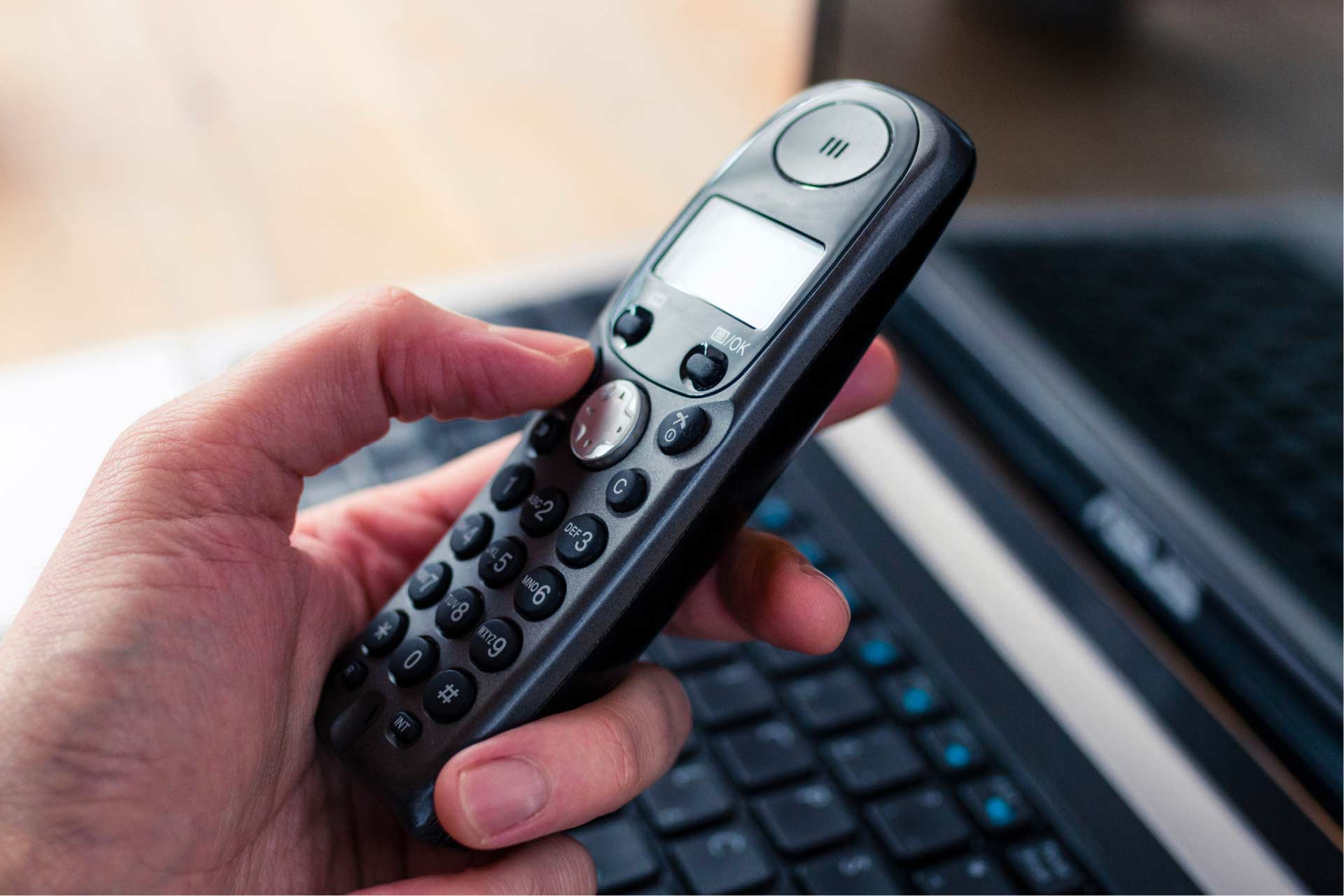
What Happens When You Call the Free Leaf411 Cannabis Nurse Hotline?
Our Leaf nurses approach calls to the hotline just as they would any other patient encounter, bringing nursing best practices into their work. This means that when you call the Leaf411 hotline, you should expect an experience similar to other telehealth encounters, though the focus is on education not diagnosis (diagnosis would be outside of our scope of practice!).
Generally, you can expect the following steps during your call:
- Background Information: While the hotline is anonymous, we gather non-identifying data (location, age, etc.) to ensure our services match caller needs. This information also helps us determine what cannabis and CBD hemp options exist based on laws in your home state. We may gather this information up-front or as part of the conversation, depending on the caller’s needs.
- Triage: Our Leaf Nurses ask a series of questions to understand your healthcare needs and goals for using CBD hemp or marijuana, whether you’re completely new to the plant or an experienced user. We’ll also ask questions about your activities of daily living to make sure that our education is tailored to your day-to-day realities.
- Your History of Marijuana Use: When considering marijuana or CBD hemp as a therapeutic tool, it’s important to factor in where you’re coming from. Are you an experienced user, or was the last time you consumed over 20 years ago? Have your past experiences been positive or negative? It’s okay if you have hesitations or concerns based on past experiences! Our Leaf Nurses are non-judgmental and provide balanced information based on your goals and preferences.
- Offering Education and Guidance: Once we have a clear sense of your healthcare needs and goals, we provide education and guidance that can save you time and money when it comes to finding the best cannabis options for pain, insomnia, or other needs. Our Leaf Nurses also understand that most callers want relief without impairment so that they can go about their daily lives.
We start with Cannabis 101 education on your endocannabinoid system, followed by general guidance on product types, routes of administration, and dosing. For example, our Leaf Nurses may suggest starting with a ratio product that contains specific amounts of THC and CBD. They also take into account any physical limitations that callers may have to recommend easy-to-use product formats, like gummies that can easily be divided into smaller doses. - Follow-Up Options: If you’re calling us at the very beginning of your cannabis journey, wondering where to start, you’re not alone! Many of our callers are new to marijuana or CBD hemp. We understand that as you begin trying different products and learn more about cannabis, additional questions may come up. While the hotline is anonymous, we do take notes as part of our nursing practice, including your phone number. That makes it easy for us if you have follow-up questions so that we can pull up those past notes and pick up right where we left off. You can also request to speak with the same Leaf Nurse you previously talked to, though we may need to schedule a call-back time based on our nurses’ schedules.
Want to hear what it sounds like to call the hotline? Colorado Public Radio’s On Something podcast gave us a test call, and also talks to Katherine about the hotline’s work.

How the Leaf411 Hotline is Different than Other Resources
The Leaf411 hotline is unique in that we’re the only free RN-staffed cannabis health resource in the U.S. (at least that we’re aware of!).
There are many free online resources for general learning, including our own Leaf Library. But when it comes to questions specific to you–your health goals and needs–those are best addressed by a trained clinician, not someone without a medical background.
Other cannabis clinicians provide individualized education, but they charge patients for the service. However, we decided to do things differently at Leaf411, to ensure that anyone and everyone would have access to the same professional and trustworthy cannabis information.
Your Calls Demonstrate the Need for Clinically-Backed Cannabis Education
Whenever you choose the non-profit Leaf411 hotline as a resource, you’re supporting the need for balanced, unbiased clinically-backed education on marijuana and CBD hemp. We point to hotline’s overall call volume as proof when we talk to grantmakers, industry or public health partners.
We know some people would like to support the non-profit hotline in other ways as well. Sign up for our newsletter below to stay up-to-date on upcoming fundraising initiatives, as well as our upcoming Leaf Learning: Get the 411 series events!
Cannabis, CBD Hemp and Workplace Drug Testing
Medically reviewed by Katherine Golden, RN
Written by Denise Rustning
Thirty-three states have legalized medical marijuana, with 11 of those states also legalizing adult-use (recreational) marijuana as of October 2020. Come November, those numbers are likely to grow as five additional states vote on either medical or adult-use cannabis initiatives.
But just because marijuana is legal in your state doesn’t mean that you’re protected, should you fail a workplace drug test.
Also, the proliferation of CBD hemp products has raised questions about whether the minimal, non-intoxicating amounts of THC contained in full-spectrum CBD hemp might trigger a positive drug test result.
We hear these concerns frequently enough on the hotline that we decided to take a closer look at current workplace drug testing protocols to help you choose the best course of action for your own use of CBD hemp or legal marijuana containing higher amounts of THC.

Why Does Cannabis Stay in Your System Longer than Other Drugs?
Many people use cannabis to help manage health conditions, boost wellness or simply to unwind after a stressful day. Cannabis’s intoxicating effects generally fade away after 2-8 hours, depending on your mode of ingestion. This means that the bowl you smoked on a Friday evening will be a distant memory by the time you return to work on Monday.
However, when the cannabinoid tetrahydrocannabinol (THC) is broken down, it creates non-active metabolites (THC-COOH) that stay in your system much longer. While these non-active metabolites don’t give you any kind of psychoactive effect, they are the “evidence” of cannabis use that urine drug tests look for. Depending on how frequently you use cannabis, these metabolites can be detected for several weeks or even months.
Other drugs like cocaine, amphetamines and opiates flush out of the body much faster, within a matter of 1-4 days. Alcohol also quickly exits the system, often within hours.
Why is cannabis different? Cannabinoids like THC are fat-soluble, with their non-active metabolites accumulating in fat cells. These metabolites are slowly flushed out via urine over a longer timeframe when compared to water-soluble substances that pass through without making a stop in fat cells.
When thinking about workplace drug testing, it doesn’t seem fair that someone could either lose a job or an offer due to a positive cannabis drug test, especially in a state where their cannabis use is fully legal and very likely happened off the clock. But until employers change their policies or the laws change, drug testing will be a reality for many workers, including those in the healthcare industry.
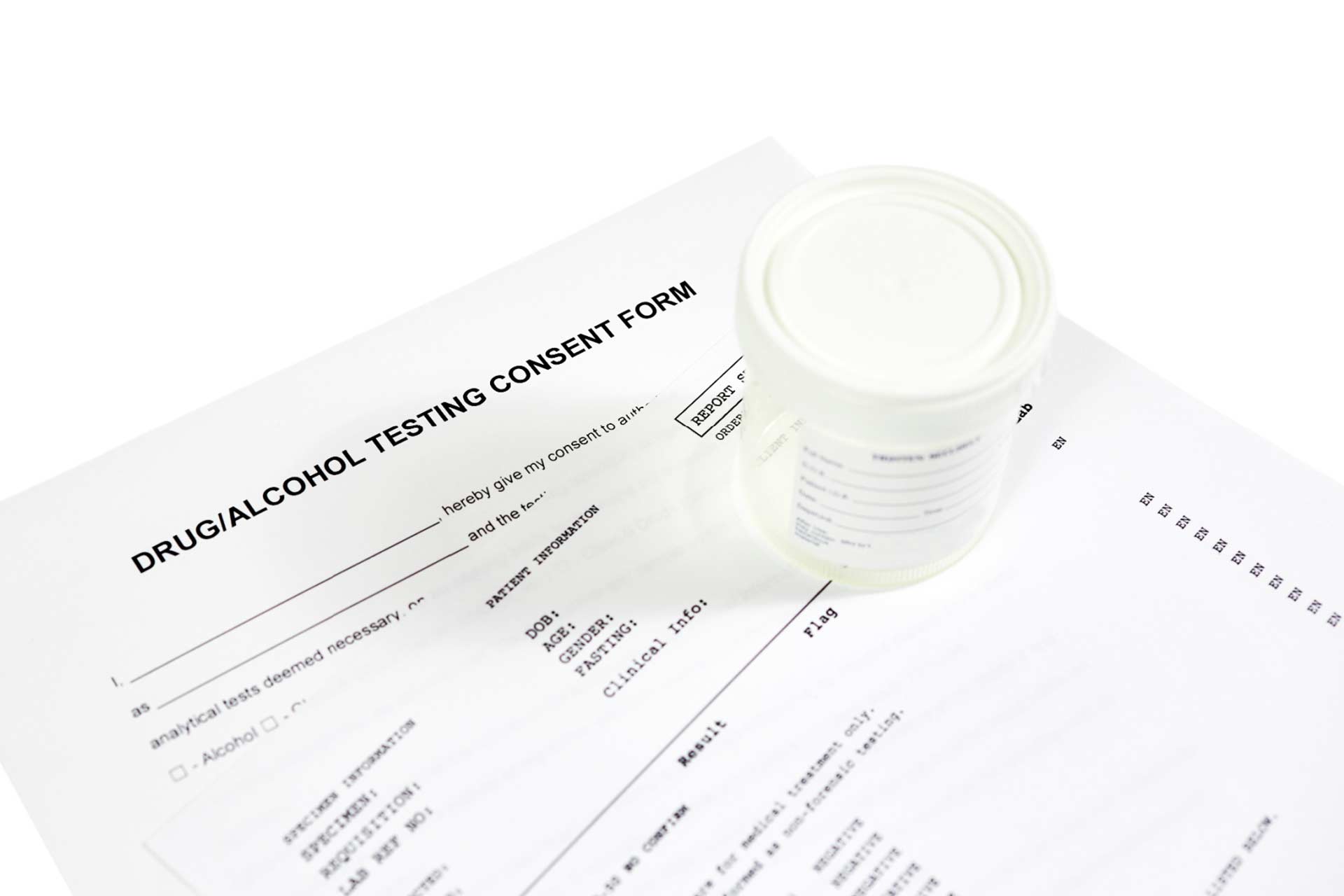
Drug Testing and Cannabis: What Do the Tests Look For?
Most workplace drug tests continue to include marijuana in their drug testing panel, even in legal states. Workplace drug tests, including Department of Transportation (DOT) tests, are typically set to trigger a positive marijuana result at 50 ng/ml.
If you’re required to complete a pre-employment drug screening or workplace testing, you can call the lab in advance to ask how many nanograms they’re testing for. This information will help you anticipate what your results might be, based on your past use of cannabis.
- For occasional users, metabolite levels in urine may remain above 50 ng/ml for 1-5 days
- For regular once-a-day users, levels may be detected for 1-3 weeks after discontinuing cannabis
- For moderate multiple-times-a-day users, levels may be detected 4-6 weeks following discontinuance
Factors that Impact Levels of Cannabis Metabolites in Urine
Your best friend tells you that they only had to stop using cannabis for one week to pass their drug screen. Your use is similar to theirs—so can you assume the same rule applies to you?
Not necessarily!
First of all, product potency plays into how long cannabis metabolites stay in your system. Your friend might be using a very low-dose tincture, while you depend on a product with ten times the amount of THC. Ingesting more THC means that you’ll end up with more metabolites which take longer to flush out of your system.
Also, body fat levels may impact how long THC-COOH remains present since it’s stored in fat cells. Put bluntly, the more body fat you have, the longer the metabolites might stick around.

Will CBD Hemp Cause a Positive Drug Test Result?
CBD hemp was legalized as part of the 2018 Farm Bill, and full-spectrum hemp (which contains all of the plant cannabinoids) may contain up to 0.3% THC under federal law. That amount of THC is so small that you won’t feel any intoxicating effects from it—but will it show up on a workplace drug test?
That’s an incredibly important question for many people. When your job is on the line, you can’t afford to take chances.
We suggest that anyone who is subject to regular or random drug tests should limit their purchases to CBD isolate products which have all THC removed. (Check out our article on CBD for more information on different types of CBD hemp.)
Be sure to confirm the products are THC-free by reviewing third-party test results, which are called Certificates of Analysis (COAs). All reputable manufacturers will have COAs available for their products. COAs should be on the product website or available by request. Details on the COA will vary, but they should always include results for CBD and THC levels.
We know that COAs can be confusing! Our Leaf nurses are experienced at reading COAs and can help with any questions you may have. Call us at 844-LEAF411 (844-532-3411) or chat us from the Leaf411.org homepage during hotline hours.
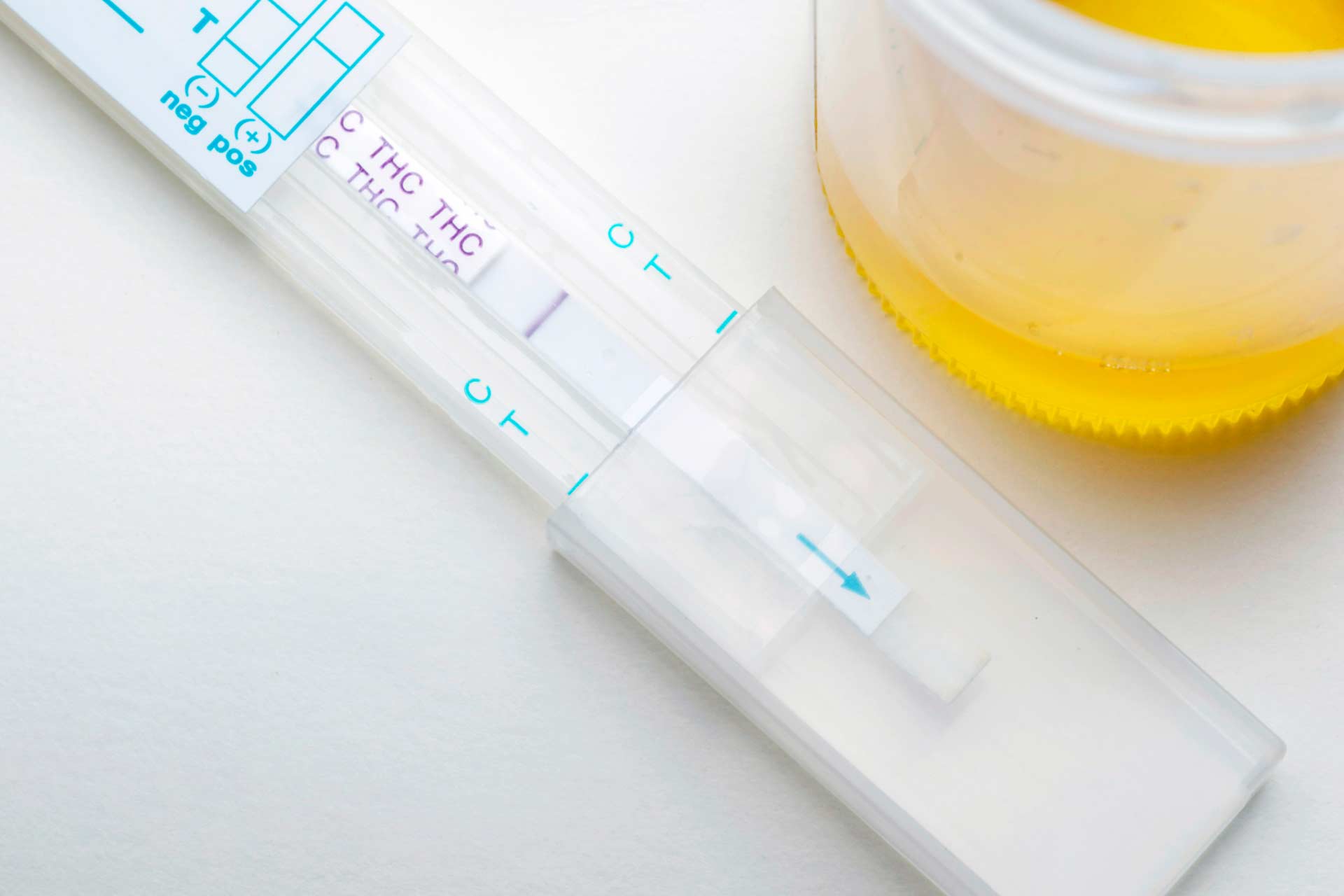
Using Retail Drug Tests as a Tool
Curious whether your cannabis use will register on an employer-mandated drug test? Test yourself and see! Over-the-counter urine drug tests are widely available for home use. They also give you the chance to find your optimal length of time to abstain from cannabis, if you’re anticipating pre-employment drug screening or annual tests in the near future.
Some companies like UTest even offer marijuana drug tests at different sensitivity levels, including 15 ng/mL, 20 ng/mL, and the standard 50 ng/mL, so that you can prepare based on what you know about your workplace’s testing policies.

Other Steps to Prepare for a Drug Test
You’ll find all kinds of advice online about how to pass a workplace drug test. Much of it is based on anecdotal evidence or is merely an urban legend.
However, we do suggest safely increasing your fluid intake prior to a test to help flush out metabolites more quickly. Also, if possible, schedule your drug test later in the day, when drug metabolites will be less concentrated in urine.
Our Leaf Nurses Are Ready to Help
Our fully-licensed registered nurses answer all sorts of cannabis and CBD hemp questions on the hotline. Whether you’re concerned about workplace drug tests or simply curious about trying cannabis for pain, insomnia or other health concerns, we’re here to help at no cost to you! Call us at 844-LEAF411 (844-532-3411) or chat us from the Leaf411.org homepage during hotline hours.
